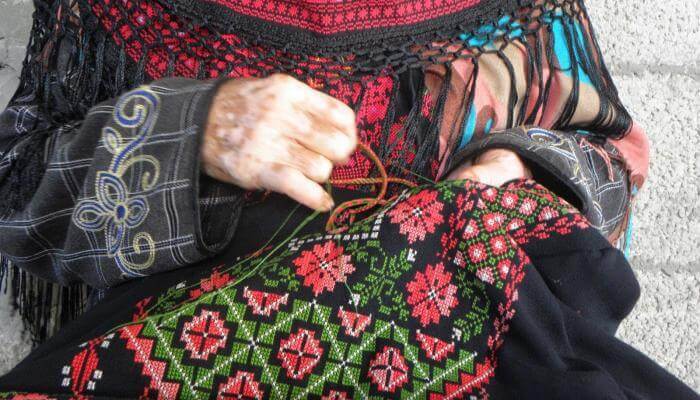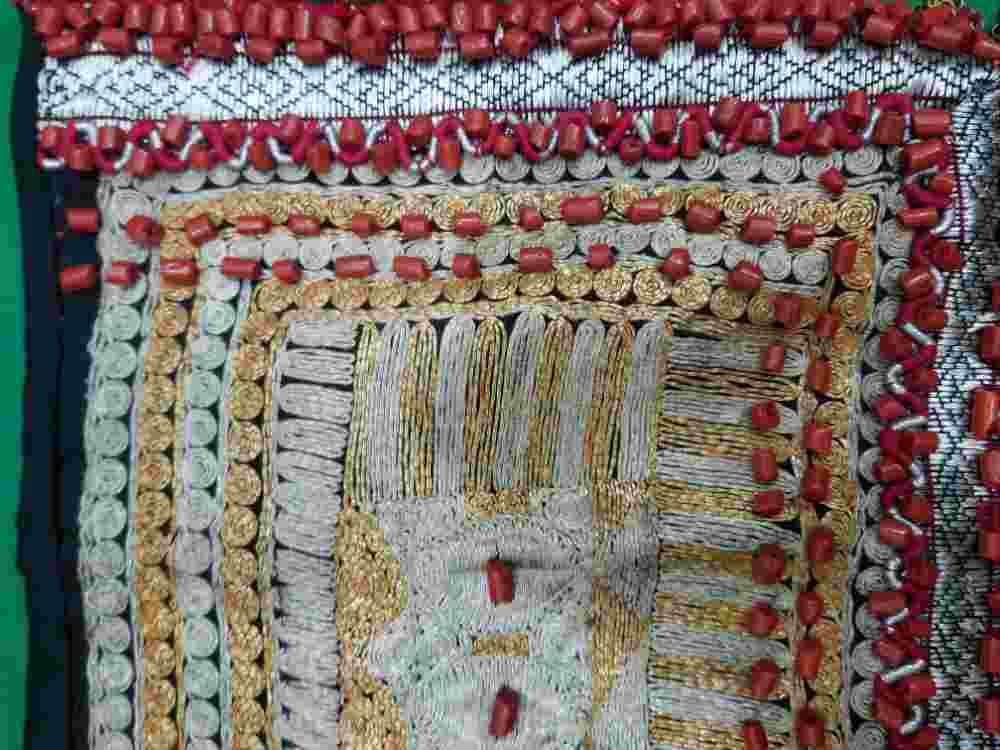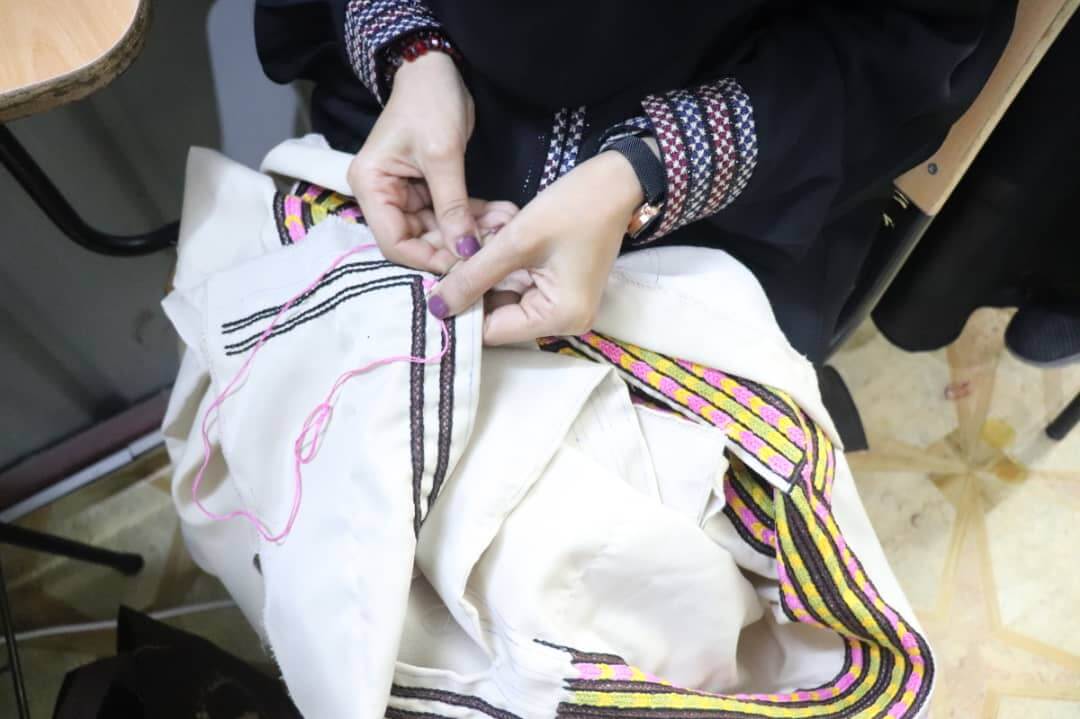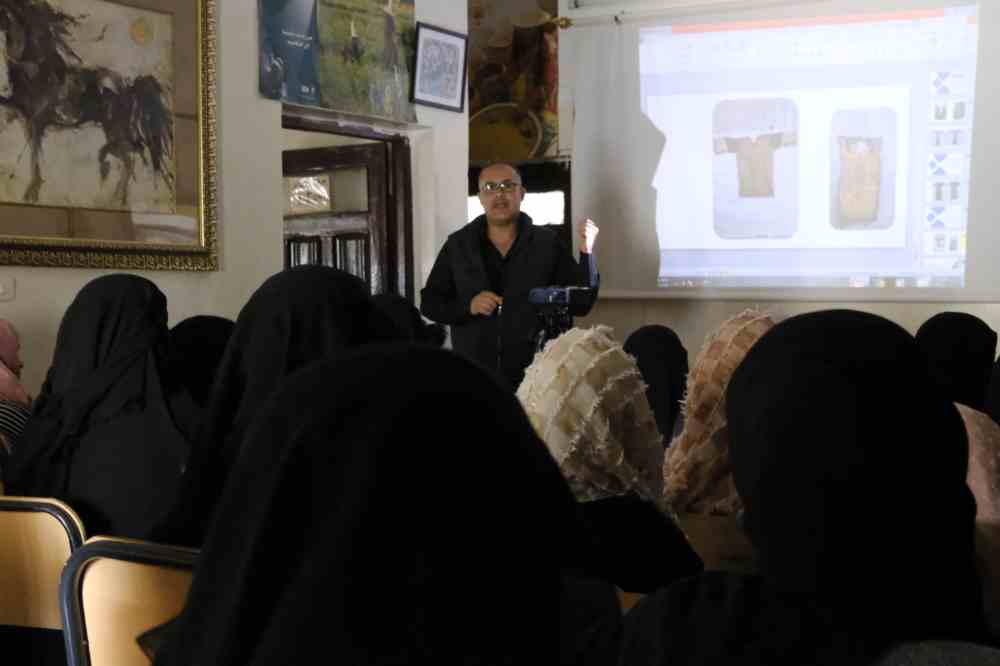
Yemeni embroidery
Yemen is famous and known for many types of arts, including the art of embroidery. Embroidery offers a good insight into Yemen's history, society and great civilization. It is used to decorate all kinds of clothing and gives both a rich and unique beauty to Yemeni customs that still exist to this day despite a number of influences that have been introduced over the years.
Yemeni embroidery adorns all types of clothes worn by men, women, and children, as well as accessories. It is an important reflection of Yemeni culture, society and identity.
This art has been practiced by Yemenis since the first millennium BC and spread to the entire south of the Arabian Peninsula. Embroidery echoes many arts of Yemen's civilization such as carving, architecture and jewelry. The art of embroidery can be divided into three main sections based on Yemen's geography as follows:
Mountain Highlands region.
The plain areas.
Plateau areas.
These can then be divided into more accurate subsections. Each has its own style, with designs, colors and types varying greatly. The embroidery is added on different fabrics, typically colored fabrics tinted with pigments extracted from flowers, roots or leaves, most importantly the dye called (Al-Neilah) which gives a dark blue colour.
Most of these fabrics were made of linen, wool, cotton or silk, whether locally manufactured or imported.
Embroidery on head coverings includes men's items like keffiyeh, shawl, and sumata, women's head covers such as gargush and maghmouq and children's head covers, for examples gargush and laggah .
Men and women's clothes are often embroidered around the neck and chest sometimes extending in some areas to the bottom of the dress from the front and the back area and sleeves and the bottom of the dress in a frame that surrounds it completely. Women's trousers are embroidered at the lower leg part with decorative belts surrounding the front with a height of approximately 3 to 10 cm. Other items such as amulets, curtains, napkins, women's bags, belts, women's coverings and more were embroidered
Over the years, various types of local manufactured threads were used in embroidery. They were made of cotton, linen and wool, and were tinted in different colors from plants and minerals, including dark blue, yellow, red, green, etc. These were mixed with materials such as shebb and zaaj to make the colors last longer. . Some items were also added a long way with embroidery to increase the beauty of the pieces - these included seashells, gold and silver coins, small pieces of materials, beads, colored metal threads, and also some precious stones like coral and onyx.

Detail of a head covering embroidered with metal threads
The type of embroidery and its density together with the materials used indicated the wealth and social standing of the wearer. Moreover, different embroidered pieces were and still are worn for specific types of social gatherings.
Yemeni traditional embroidery is now at risk of losing its identity and of extinction due to neglect and a lack of interest. YENOF's workshops have responded to this risk and, with the support of the Cultural Protection Fund, whom we thank, committed further to preserving this important aspect of Yemen's cultural heritage through added workshops and this site created to share images and information. We had two sessions of six months during which 100 women learned the importance of embroidery as cultural heritage and different ways of preserving it. They were trained in traditional embroidery methods, stitches and materials. They learned to draw shapes and choose colors following ancient designs. They produced many embroidered items that revived this traditional character, including various purses, bags, cushion covers, dresses, and belts.
Sub Sections

Our Workshops and Products
In 2013, YENOF began a new initiative to help children of very low-income families access education. It established embroidery Read More ...

Traditional Embroidery Stitches
Since the start of its embroidery workshops YENOF has been recording stitches old and new. A selection is found Read More ...
